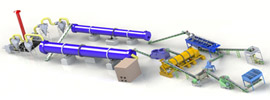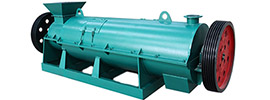The types of fertilizers suitable for use in Central Asia need to be comprehensively analyzed based on their climate, soil, agricultural patterns, and crop needs. The following are specific recommendations:
1. Impact of Climate and Soil Conditions on Fertilizer Selection
- Arid and Semi-Arid Climate: Central Asia (e.g., Kazakhstan, Uzbekistan, Turkmenistan) experiences low precipitation and high evaporation, leading to soil salinization. Prioritize salt-tolerant, water-retentive fertilizers, such as humic acid fertilizers, organic-inorganic compound fertilizers, or compound fertilizers blended with soil amendments (e.g., gypsum, sulfur) to reduce salt damage.
- Soil Types:
- Saline-Sodic Soils: Require calcium and sulfur supplementation (e.g., calcium nitrate, ammonium sulfate) to displace sodium ions and mitigate salinity.
- Sandy Soils: Poor nutrient retention necessitates slow-release fertilizers (e.g., controlled-release nitrogen fertilizers, coated compound fertilizers) or staggered applications of quick-acting fertilizers to minimize leaching.
- Clay Soils: Poor aeration can be improved by incorporating organic fertilizers (e.g., compost, manure) alongside micronutrients (e.g., zinc, iron).
2. Agricultural Practices and Crop Demands
- Irrigated Agriculture (e.g., Cotton, Wheat, Corn):
- Cotton: High potassium demand (promotes fiber development); apply potassium sulfate or potassium chloride, supplemented with boron (prevents "boll shedding") and zinc (prevents stunted growth).
- Wheat/Corn: Require balanced N-P-K fertilizers (e.g., N-P₂O₅-K₂O = 15-15-15). Foliar sprays of monopotassium phosphate enhance drought resistance.
- Protected Agriculture (Greenhouse Vegetables/Fruits):
- Demand high-concentration, complete fertilizers like water-soluble fertilizers (e.g., balanced 20-20-20 or high-K 13-5-40) for drip irrigation systems.
- Supplement with calcium, magnesium, and iron (e.g., calcium nitrate, chelated iron) to prevent physiological disorders (e.g., tomato blossom-end rot).
3. Environmental and Sustainability Considerations
- Organic Fertilizer Promotion: Central Asian nations are advancing green agriculture. Utilize livestock manure (e.g., cattle, sheep) for composting or grow green manures (e.g., alfalfa, clover) for soil incorporation to boost organic matter.
- Biofertilizers: In saline soils or fields with continuous cropping issues, apply rhizobia (for legumes), phosphate-solubilizing bacteria, or Bacillus subtilis to enhance nutrient uptake and disease resistance.
- Precision Fertilization: Combine soil testing and crop nutrient diagnostics with variable-rate fertilization or foliar applications to minimize over-fertilization and environmental pollution (e.g., groundwater nitrate contamination).
4. Specific Fertilizer Recommendations
| Fertilizer Type |
Applicable Scenarios |
Advantages |
| Slow-Release Compound Fertilzer |
Field crops (cotton, wheat) |
Prolongs nutrient release, reduces application frequency, suitable for arid regions |
| Water-Soluble Fertilzer + Drip Irrigation |
Greenhouse vegetables/fruits |
Efficient water use, precise nutrient delivery, prevents soil salt accumulation |
| Organic-Inorganic Compound Fertilzer |
Saline/sandy soil improvement |
Combines organic matter for soil structure with quick inorganic nutrient supply |
| Micronutrient Fertilizers |
All crops (especially cash crops) |
Prevents deficiencies (e.g., cotton boron deficiency, apple bitter pit), improves quality |
| Biofertilizers |
Saline soils, continuous cropping fields |
Enhances soil activity, reduces chemical fertilizer dependency |
5. Key Considerations
- Avoid Indiscriminate Use of Potassium Chloride: Restrict its use in saline soils or chloride-sensitive crops (e.g., tobacco, potatoes); prefer potassium sulfate instead.
- Staggered Fertilization: Slow nutrient release in arid soils necessitates basal + top-dressing applications to avoid one-time overuse.
- Policy Support: Leverage agricultural subsidies (e.g., Kazakhstan’s organic fertilizer subsidies) to reduce costs.
Summary: Central Asia should adopt an integrated "organic + inorganic + biofertilzer" approach, prioritizing slow-release, water-soluble, and low-salt fertilizers alongside precision agriculture technologies to balance yield enhancement with ecological protection. Tailor formulations based on soil tests and crop needs, collaborating with local agricultural authorities or research institutions for optimized solutions.
 Send us a Email
Send us a Email Wulong Industrial Cluster
Wulong Industrial Cluster Have any question?
Have any question?



















